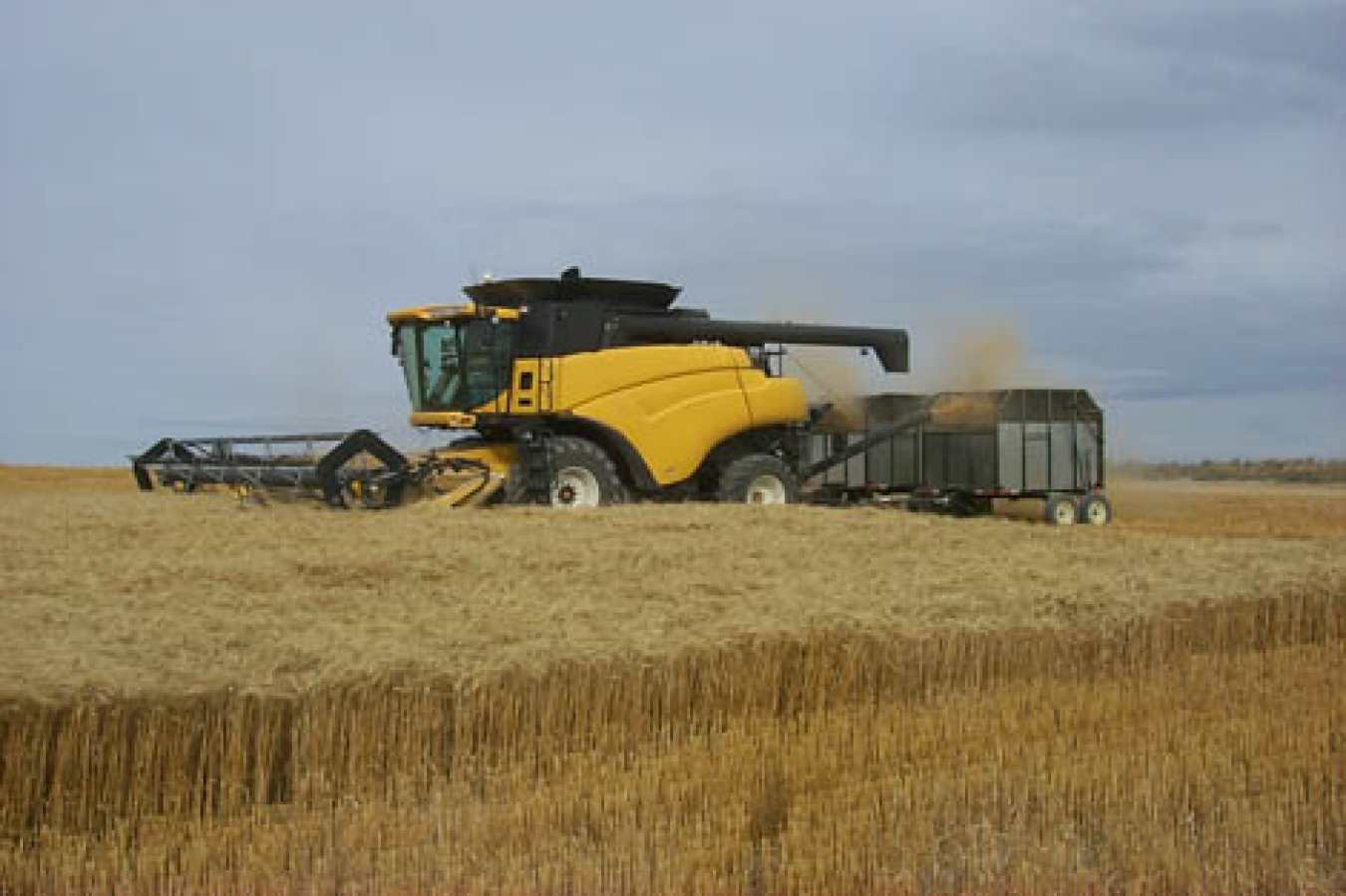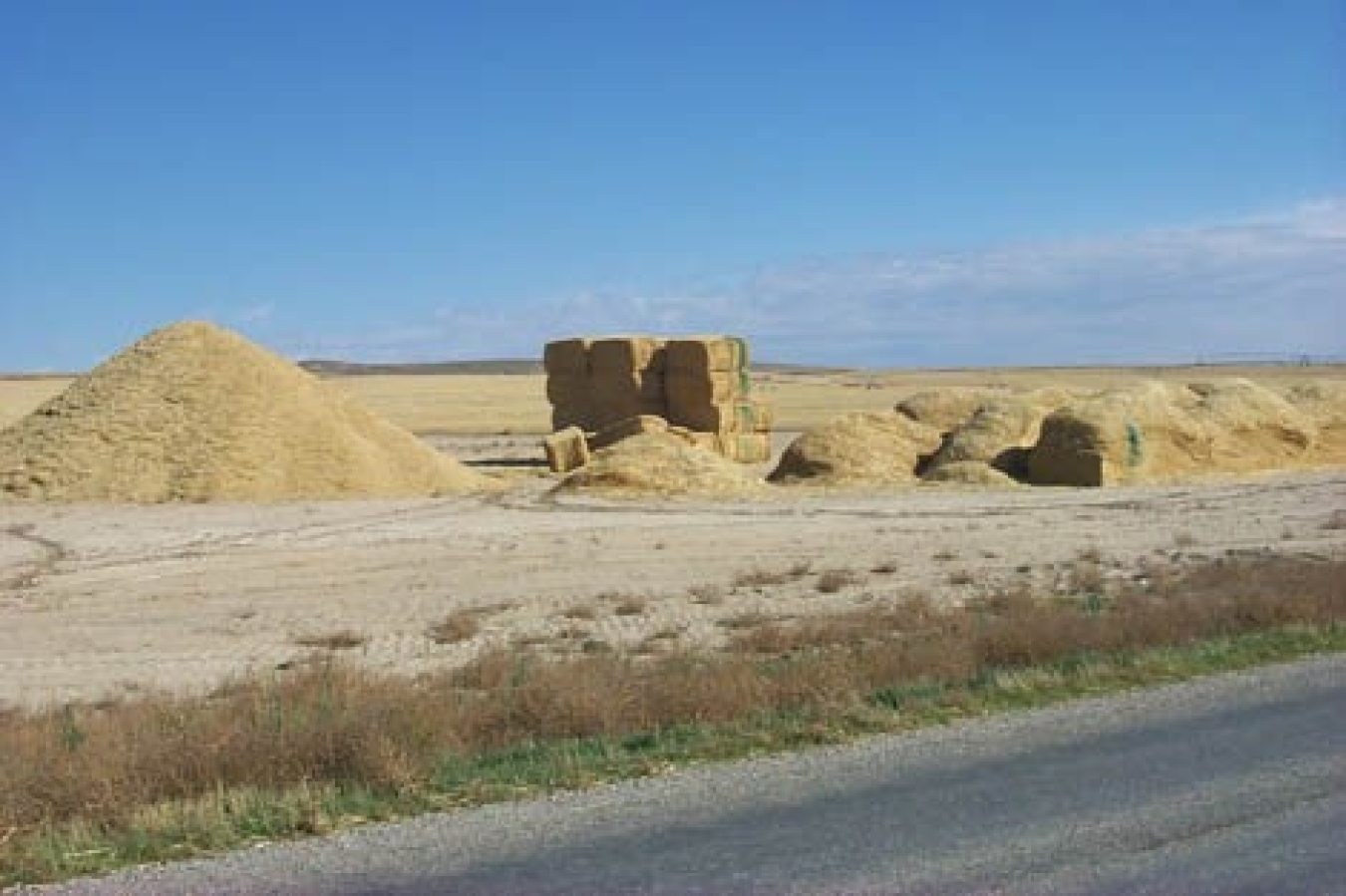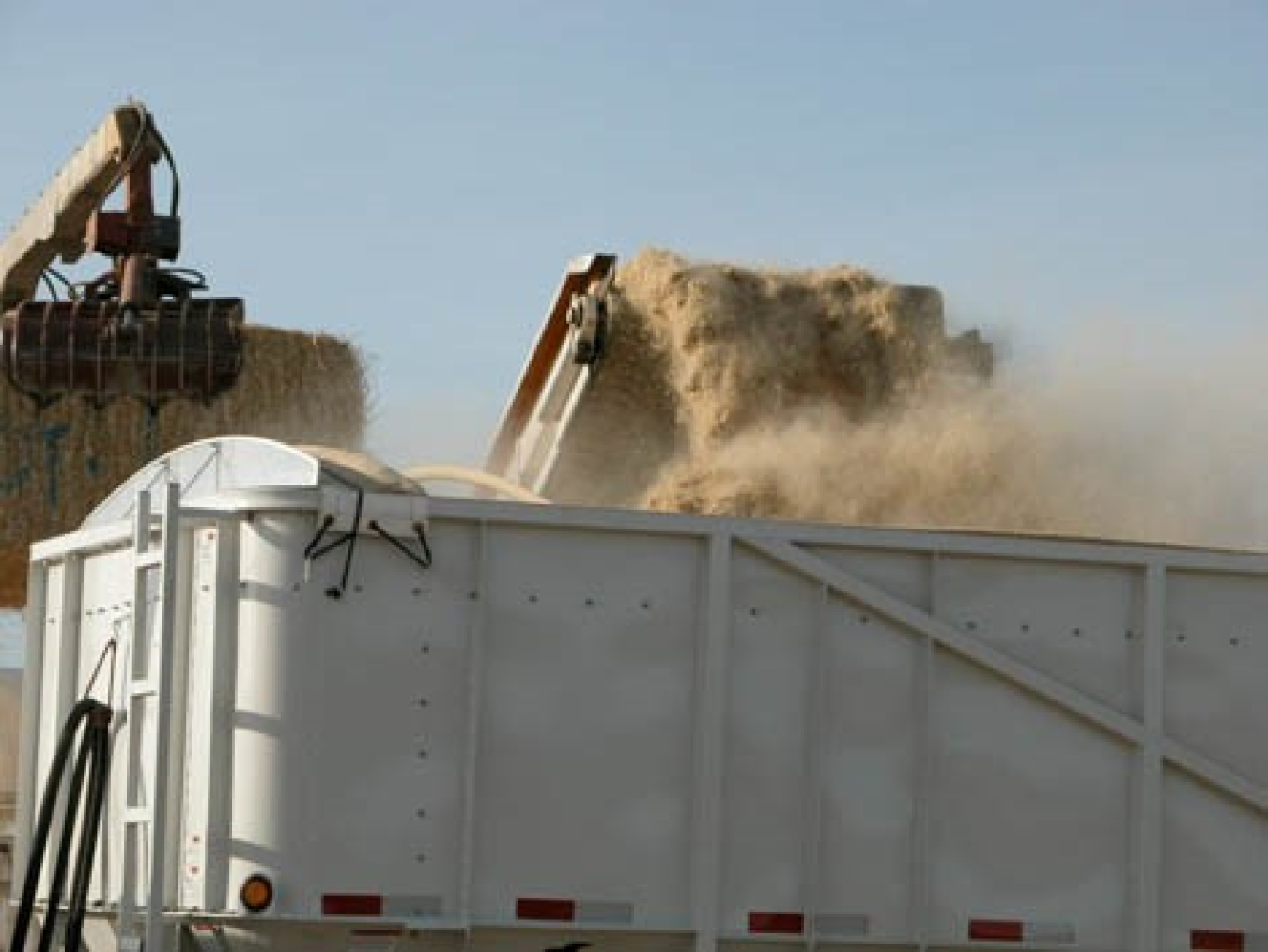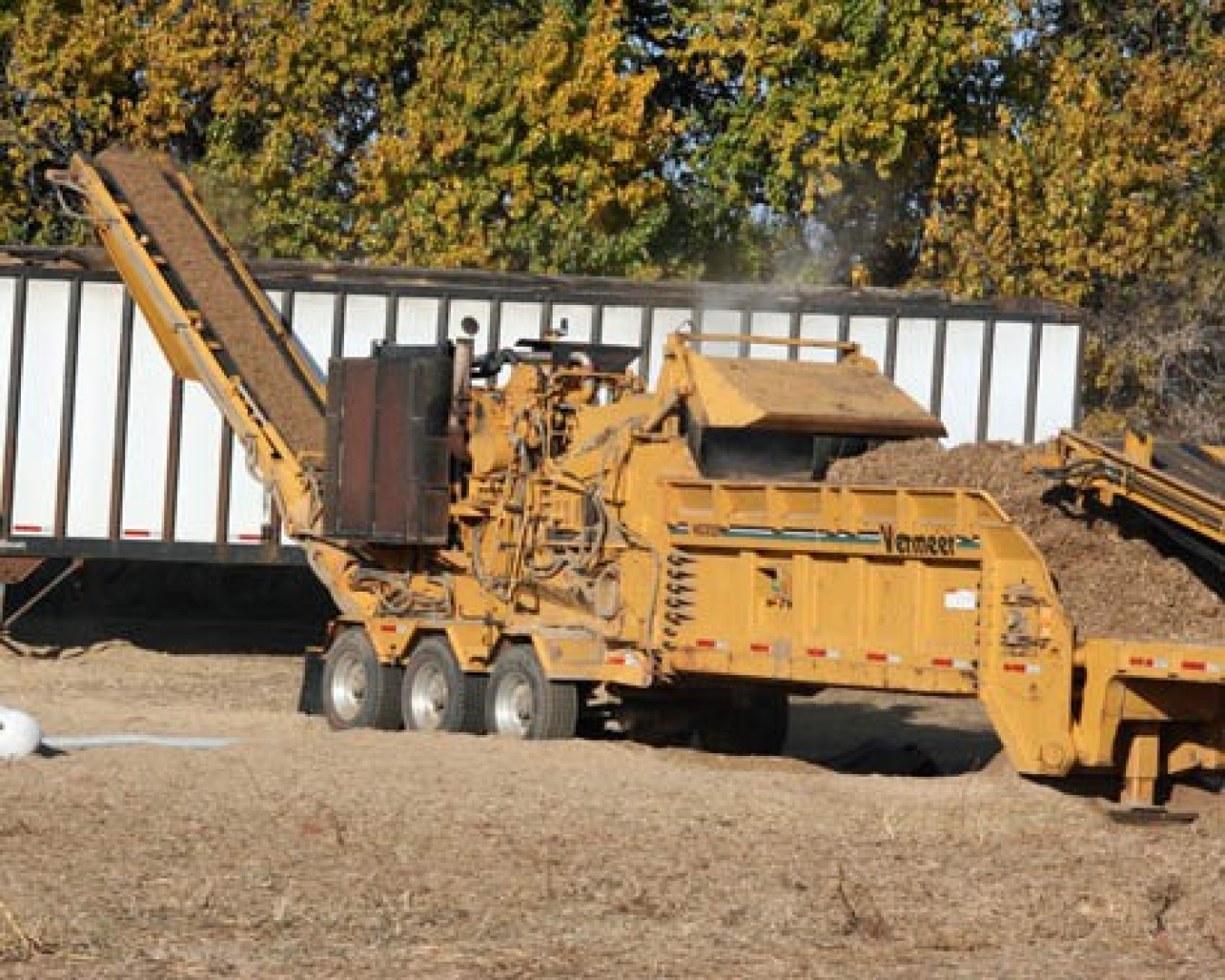Feedstock logistics encompass all of the unit operations necessary to harvest or collect a renewable carbon source, such as biomass, and move it from the field or forest through to the throat of the conversion reactor at the biorefinery, while also ensuring that the delivered feedstock meets the specifications of the biorefinery conversion process (i.e., “conversion-ready”).
Harvesting and Collection
Cost-effective and viable removal of renewable carbon sources from the field, forest, or waste facility play a critical role in expanding the amount of resources accessible to the bioenergy feedstock supply system. Collection timing and strategy may affect the resulting quality parameters, such as chemical composition and structural features of the resource. Collection format can impact the efficiency and cost associated with downstream handling, storage, and transportation.

An example of new harvesting technologies being demonstrated in the field to cost effectively separate grains, straw, and leaves in one pass in the field, while preparing the biomass in a form that can be easily stored and transported to a biorefinery.
Storage
Cost-effective storage and preservation of the quantity and quality of seasonally-available renewable carbon sources is necessary until required for processing. Preserving feedstock quality requires:
- Managing moisture content
- Minimizing degradation and material loss
- Preventing undesirable changes in quality characteristics.
This includes inventory management to monitor and maintain biomass and feedstock quality over longer storage times, while minimizing losses from handling and microbial degradation and developing strategies to minimize fire risk from spontaneous combustion, lightning strikes, and human causes.

Three examples of storing biomass are shown in this photo—(from left to right), a loose pile of chopped material, a stack of large square bales, and in loaves.
Handling and Transportation
Improvements in handling characteristics early in the supply chain include processing the resource into formats compatible with existing high-capacity bulk handling and transportation infrastructures. This may reduce delivered feedstock cost. Low-density, non-uniform renewable carbon sources in existing high-volume, high-throughput materials handling systems present many challenges.
Renewable carbon sources must be moved from the field, forest, or waste facility to the preprocessing site, and preprocessed feedstocks must be delivered to the throat of the conversion reactor. Resources and feedstocks may be transported by truck, train, or barge using existing transportation infrastructure.

In this photo, preprocessed biomass is being loaded into a trailer that will either deliver the biomass feedstock to a biorefinery or will act as a temporary storage container for the biomass.
Preprocessing
Preprocessing operations transform renewable carbon sources into stable, standardized format feedstocks with physical and chemical characteristics that meet the required quality specifications of conversion facilities and that can be moved with existing, high-volume transportation and handling systems.
Drying and densification stabilizes biomass for longer-term storage and improves durability and performance in handling, transport, and conversion. Blending and formulation can reduce the physical and chemical variability of raw biomass for more reliable, predictable, and efficient performance in downstream conversion.
Preprocessing includes mechanical, thermal, and chemical treatments—any or all of which could be applied at various points in the logistics chain. The most efficient and cost-effective set of feedstock supply chain operations may vary with circumstances.

Scientists and engineers have used BETO's Process Demonstration Unit to develop optimal methods for grinding bales or piles of corn stover, with the intent of reducing the cost of preparing biomass in a form that is readily usable by biorefineries.

